Woodcut and wood engraved terms are sometimes used interchangeably – they are both relief prints made by carving an image into a block of wood. What actually determines whether a particular relief print is a woodcut or wood engraving is which surface of the wood block is used - if produced from side (or plank) grain wood it is a woodcut – if on end grain wood, it is a wood engraving. Whichever method is used, the resulting illustration is frequently strikingly beautiful.
Woodcuts were in use in China as early as the 8th century, but it was not until the mass production of paper and printing in the 15th century that the art of the woodcut began to devlop in Europe. Early printings were often quite simple, intended to be outlines for hand-colouring, but by the 16th century artists were creating much more sophisticated and intricate designs with shading created by cross hatching. Woodblocks were frequently reused by different printers as good designs were both difficult to create and costly to produce. Woodcuts used by Caxton in his 1483 edition of Chaucer’s The Canterbury Tales, were used both by Pynson in his 1526 edition and again by Godfray in his 1532 edition of The Workes of Geoffrey Chaucer. Godfray also used the fine title border woodblock, designed by Holbein, originally used by Froben for his printing of Erasmus’s Epigrammata in 1518. Since Godfray used some of Pynson’s other woodblocks, and Pynson had business dealings with Froben it is probable that Froben’s text border came to Godfray via Pynson.
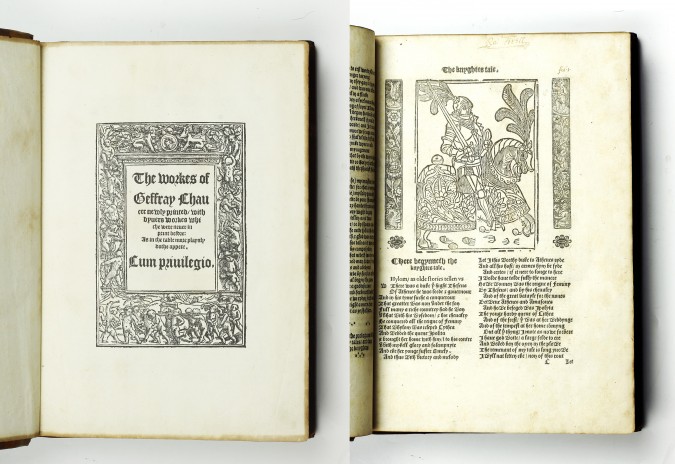
The Workes of Geffray Chaucer, 1532
In addition to creating beautiful illustrations to enhance a book, woodcuts were also used to provide diagrammatic representations in academic texts.

Apollonious's Conicorum Libri Quattuor, 1566
The use of woodcuts began to decline in the 17th century as copper engraving and etching became more popular, although they were still used by some printers, as in the attractive designs used for decorative initials, chapter headings and tailpieces in Chetwinde's beautiful production of Shakespeare's 3rd Folio.
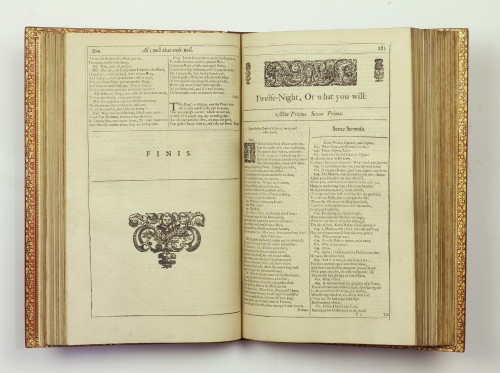
Shakespeare's Comedies, Histories, and Tragedies, 1664
Towards the end of the 18th century wood block relief printing was reinvigorated by Thomas Bewick. Bewick was able to create his trademark thin, delicate lines by using an engraver’s burin which enabled him to engrave multiple parallel lines, instead of the traditional cross-hatching, with which he achieved a wide range of tones and textures. He worked on the end grain of hard woods (usually box or maple), the smoother surface of which could be manipulated with extreme fineness, an impossibility with the plank side. The use of end grain hard wood also made his woodblocks highly durable – indeed his blocks have been known to yield hundreds of thousands of prints without wearing out. However using the end grain constrained the size of his blocks and most of his pictures are no more than 8cm square.
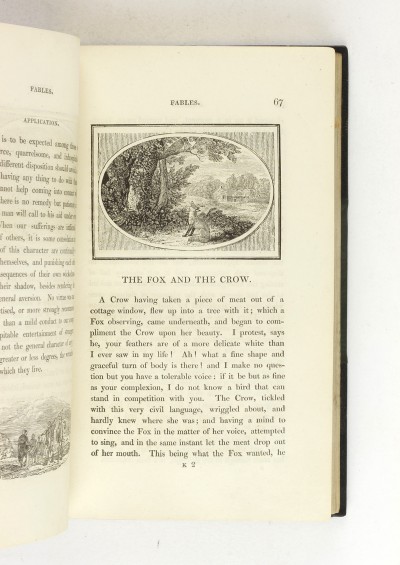
Bewick's The Fables of Aesop, 1818
The 19th century revival of woodcuts was led by William Morris, who believed in the value of books as aesthetic objects in themselves, and set out to create beautifully illustrated volumes using traditional craftsmanship. Drawing inspiration from his collection of 15th century German woodcuts, he founded the Kelmscott Press, whose aim was to use skilled hand-printing to restore the quality achieved by the printing pioneers of the 15th century.
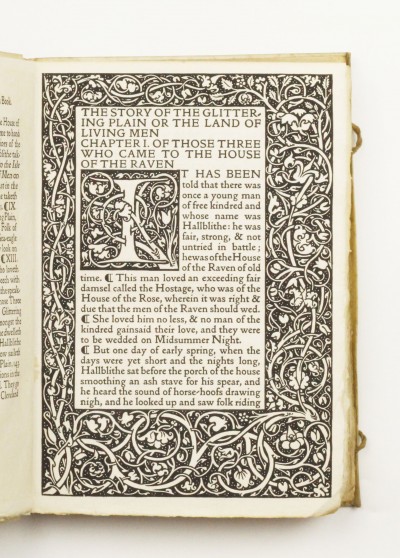
Kelmscott's First Book - The Story of the Glittering Plain, 1891
The first book off the Kelmscott press was the start of a series of publications which was to culminate in one of the most beautiful books of its day – known simply as the Kelmscott Chaucer. The most ambitious and magnificent book of the Press, “perfect … both in design and in the quality of the printing”, the Kelmscott Chaucer was 4 years in the making. The full page ornamental woodcut title, 14 large borders, 18 different frames round the illustrations and 26 initials were designed by William Morris and 87 stunning woodcut illustrations were designed by Sir Edward Burne-Jones and engraved by W.H. Hooper. The result was a triumph of design and beauty.
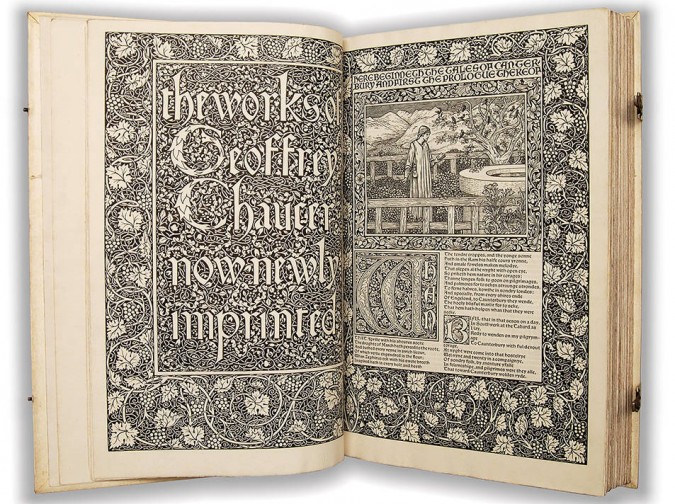
The Works of Geoffrey Chaucer, Kelmscott Press, 1896
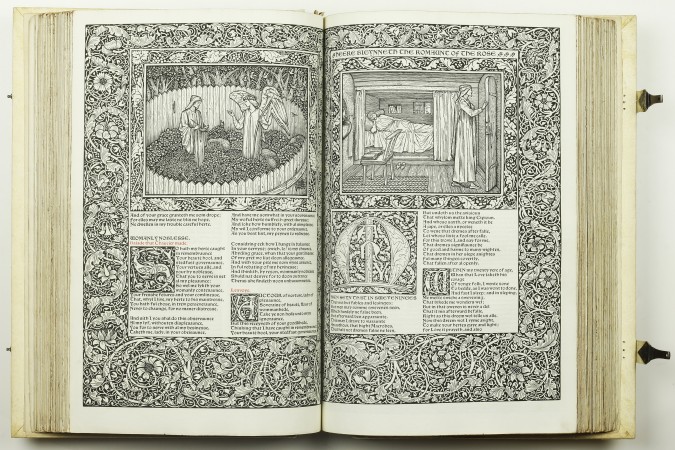
Following Morris’s success, private printing presses continued to use woodcut and wood engraved images throughout the 20th century, preferring the very individual style and aesthetic qualities they could achieve with the traditional craft.
Below is a quick snapshot of a wide variety of 20th century artists, styles and publications demonstrating the continuing development of this ancient form of illustration.
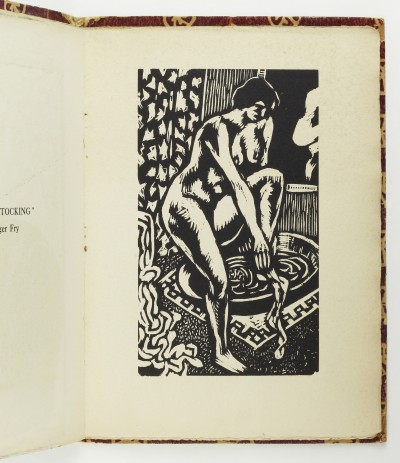
Roger Fry, in Orignal Woodcuts by Various Artists, Omega Workshops, 1918
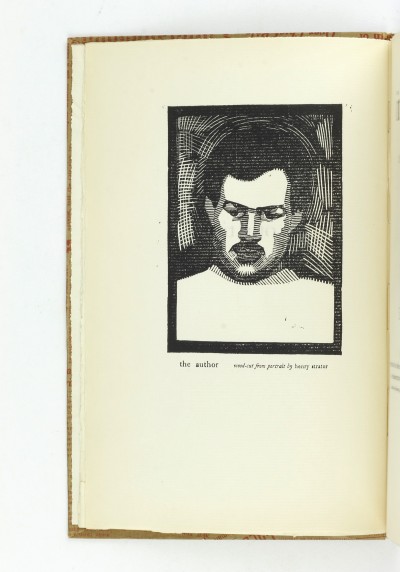 Henry Strater, in Hemingway's In Our Time, Three Mountain Press, 1924
Henry Strater, in Hemingway's In Our Time, Three Mountain Press, 1924
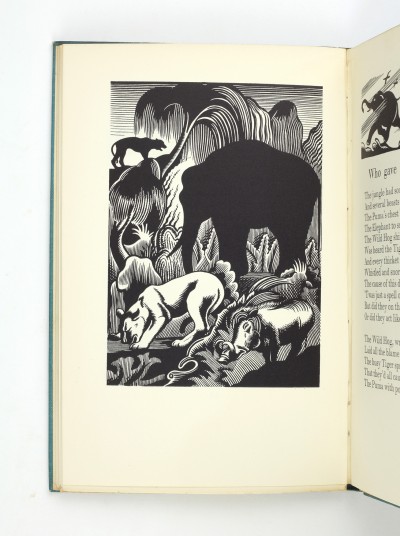
Clifford Webb, in Words, Beasts and Fishes, 1936
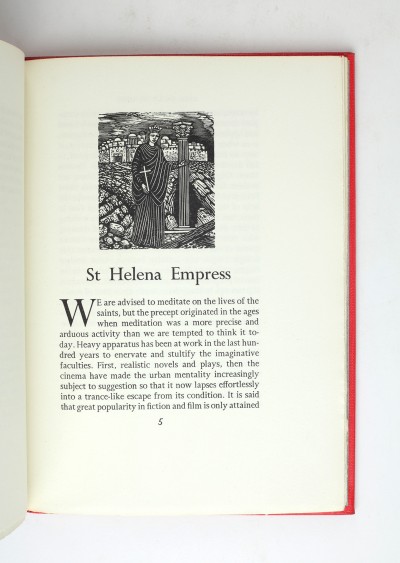
Reynolds Stone, in Waugh's The Holy Places, Queen Anne Press, 1952
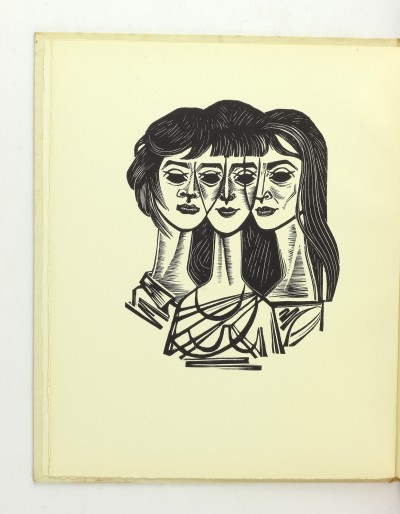
Stanislaw Gliwa, in Plath's Three Women, Turret Books, 1968
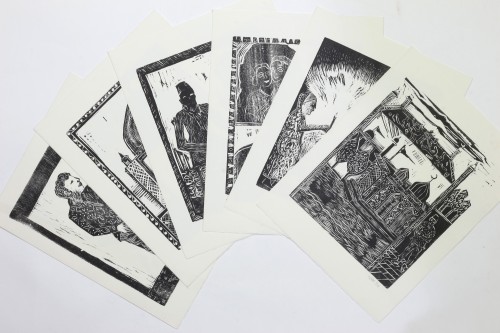
Bhupen Khakhar, in Rushdie;s Two Stories, Privately Printed, 1989
Recent Posts
- The Evolution of Crime
- Tour The Bookshop On Your Screen
- The Genesis of Mr. Toad: A Short Publication History of The Wind In The Willows
- Frank Hurley's 'South'
- The "Other" Florence Harrison
- Picturing Enid Blyton
- Advent Calendar of Illustration 2020
- Depicting Jeeves and Wooster
- Evelyn Waugh Reviews Nancy Mitford
- The Envelope Booklets of T.N. Foulis
- "To Die Like English Gentlemen"
- Kay Nielsen's Fantasy World
- A Brief Look at Woodcut Illustration
- The Wealth Of Nations by Adam Smith
- What Big Stories You Have: Brothers Grimm
- Shackleton's Antarctic Career
- Inspiring Errol Le Cain's Fantasy Artwork
- Charlie & The Great Glass Elevator
- Firsts London - An Audio Tour Of Our Booth
- Jessie M. King's Poetic Art, Books & Jewellery
Blog Archive
- January 2024 (1)
- January 2023 (1)
- August 2022 (1)
- January 2022 (1)
- February 2021 (1)
- January 2021 (1)
- December 2020 (1)
- August 2020 (1)
- July 2020 (2)
- March 2020 (3)
- February 2020 (2)
- October 2019 (2)
- July 2019 (2)
- May 2019 (1)
- April 2019 (1)
- March 2019 (2)
- February 2019 (1)
- December 2018 (1)
- November 2018 (1)
- October 2018 (2)